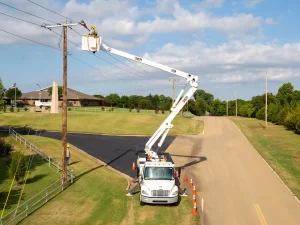In bustling metropolitan areas, the concept of “Capital Traffic Safety” plays a crucial role in safeguarding the lives of daily commuters and pedestrians. As urban populations continue to swell, the challenge of maintaining smooth and safe traffic conditions intensifies. Capital Traffic Safety is not just about enforcing laws but also about integrating technology, education, and urban planning to create safer transportation environments.
Technological Advancements in Traffic Management
Technology has revolutionized how city planners and traffic management authorities approach road safety. Intelligent transportation systems (ITS) are at the forefront, employing sensors and AI to optimize traffic flow and reduce congestion. Adaptive traffic signals, real-time traffic alerts, and advanced surveillance systems contribute significantly to preventing accidents and enhancing emergency response times. Such technologies are integral to the vision of Capital Traffic Safety, aiming to minimize risks and protect urban populations.
Educational Programs and Public Awareness
Education and awareness are pillars of Capital Traffic Safety. It’s vital that both new and experienced drivers understand the importance of road safety rules and regulations. Cities are increasingly deploying campaigns to educate citizens about the dangers of speeding, the importance of wearing seat belts, and the risks associated with distracted driving. School programs that teach children pedestrian safety and cycling tips are also essential in cultivating a culture of safety from a young age.
Infrastructure Improvements
Well-designed infrastructure is key to preventing traffic accidents. This includes the development of pedestrian zones, bike lanes, and safer intersections. Proper lighting, visible signage, and road maintenance also play a crucial role in Capital Traffic Safety. Moreover, the implementation of traffic calming measures such as speed bumps and narrow lanes helps in reducing vehicle speeds in dense urban areas, thereby decreasing the likelihood of accidents.
Policy and Legislation
Effective traffic safety policies are critical components of Capital Traffic Safety. These policies need to be comprehensive and enforced rigorously to ensure compliance. Laws pertaining to drunk driving, helmet and seat belt usage, and speed limits must be strictly enforced. Additionally, newer laws addressing the challenges posed by electric scooters and other modern mobility devices are becoming increasingly important.
Conclusion
Capital Traffic Safety is an evolving field that requires continuous effort and adaptation. As cities grow, so does the need for more sophisticated traffic safety measures. By embracing technology, education, and infrastructure development, and by implementing strong policies, cities can ensure safer roads for everyone. This holistic approach not only saves lives but also significantly improves the quality of urban living.




